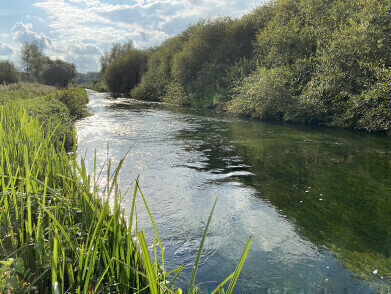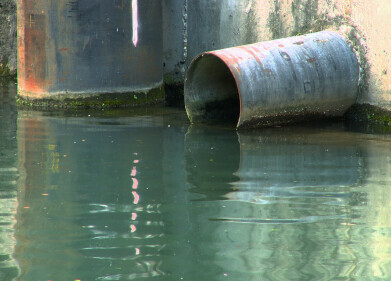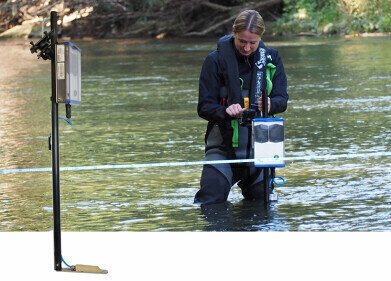River Water monitoring
Study highlights river diversions and how they extend the journey of microplastics
Jun 07 2023
In a new study published in Water Research, scientists from the University of Birmingham and an international research group shed light on the impact of river diversions on the movement of microplastics. The research revealed that diverting streams and rivers for irrigation and drinking water purposes can considerably prolong the time microplastics spend in river catchments before they finally reach the oceans.
The researchers focused on the effects of water management, specifically river diversions for irrigation, on the transportation of microplastics. These diversions have a substantial impact on the estimated flow of polluting microplastics towards the oceans. When water is diverted from rivers, it disperses the minuscule plastic particles across agricultural land. From there, these particles can be flushed back into other watercourses or nearby catchments, further impeding their journey to the sea.
To understand the extent of this phenomenon, the research team studied two paired rivers in Colorado, United States: the Boulder Creek and its less urbanised tributary, South Boulder Creek. By evaluating the up-to-downstream profiles of microplastic concentrations and loads, the research team examined the influence of urbanization and flow diversions on microplastic transport.
The results demonstrated a clear correlation between microplastic concentration patterns and the level of urbanisation within the catchment area. Boulder Creek, with a more urbanised catchment, exhibited higher microplastic concentrations in both surface water and sediment compared to South Boulder Creek. Furthermore, as the rivers passed through more urbanised areas, microplastic concentrations increased in the downstream direction. Lead author Anna Kukkola from the University of Birmingham emphasised the significance of these findings: "We discovered strong links between the degree of urbanisation in the river catchment and observed river microplastic concentrations, highlighting how human activities resulted in an immediate increase in microplastics in this mountainous catchment."
One of the key innovations of this study was the application of a loading approach to quantify microplastic fluxes. This approach facilitated the identification of microplastic sources and the determination of downstream transport patterns, including the diversion of microplastics out of the river catchment. Co-author Rob Runkel from the United States Geological Survey commented on the consistency of these results with other urban-derived elements, stating, "These results for microplastics are consistent with our results for other urban-derived elements such as chloride, where we are seeing 3 to 9 times more loading in the more urbanised Boulder Creek watershed."
In addition, the team found that the magnitude of flow diversions from both rivers led to the removal of large quantities of microplastics from each stream, transporting them out of their original catchment. The researchers measured the removal of over 500 microplastic particles per second (or 1,800,000 per hour) through flow diversions in the two studied rivers.
To grasp the global implications, consider the staggering amount of water diversion. In 2012 alone, North America diverted 241 km³ of water for agricultural purposes, with a global diversion reaching 2,670 km³. Using conservative estimates based on the particle threshold of their study, the research team estimated that this could result in the redistribution of around 41 trillion microplastic particles annually into the terrestrial environment in North America alone and up to 459 trillion particles globally.
Principal Investigator Professor Stefan Krause from the University of Birmingham highlighted the importance of managing streams and rivers to control microplastic transport, stating, "How we manage our streams and rivers can have a substantial impact on the transport of microplastics, yet these effects have not been incorporated into global models that assume downstream convergence of microplastic fluxes along river networks. Our current models may, therefore, underestimate the quantities and residence times of plastics held in river catchments and overestimate the speed with which microplastics are transported into our oceans.”
Toxicity assessment was not a priority of this study, however co-author Professor Iseult Lynch from the University of Birmingham observed “The results of this study are highly relevant for estimating ecotoxicological impacts on aquatic and terrestrial environments and ecosystems, with enhanced terrestrial residence times resulting in extended exposures.”
Digital Edition
AET 28.2 April/May 2024
May 2024
Business News - Teledyne Marine expands with the acquisition of Valeport - Signal partners with gas analysis experts in Korea Air Monitoring - Continuous Fine Particulate Emission Monitor...
View all digital editions
Events
Jul 30 2024 Jakarta, Indonesia
China Energy Summit & Exhibition
Jul 31 2024 Beijing, China
2024 Beijing International Coal & Mining Exhibition
Aug 07 2024 Beijing, China
IWA World Water Congress & Exhibition
Aug 11 2024 Toronto, Canada
Aug 25 2024 Stockholm, Sweden and online










.jpg)








